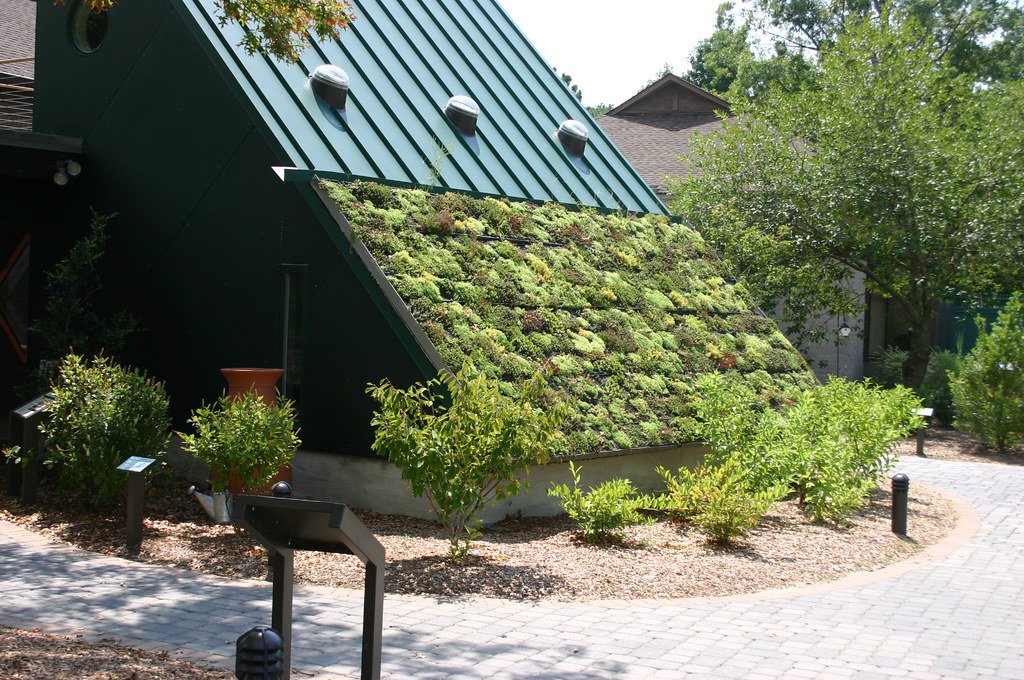Turf roof
Turf roofs are part of 'greening' our urban landscapes. Bringing nature back improves community health, climate change and nature systems.
On this page...
What is a turf roof?
Have you ever seen a garden on a roof? Turf roofs, or ‘green roofs’, are becoming more popular, not only because they look so impressive, but because they’re great for the environment too!
Turf roofs are an example of a process called ‘greening’ where we bring nature back into city landscapes to improve community health, climate change and nature systems. By partially or totally covering roofs and walls with plants we can decrease temperatures, absorb rainwater and improve air quality - to name just a few benefits!

CC BY-SA 2.0
How is a turf roof built?
A turf roof requires a few layers of material to work - first, a special membrane sheet is laid down which protects the roof underneath from being damaged by moisture or plant roots. Next, a very important drainage layer which syphons off any excess water not needed by the plants. A special membrane-like material is laid down next which holds the water that the plants need to grow, it needs to be soft so that the plant roots can grow down into it. Finally the top layer - plants! Some people opt for a simple grass roof, while others incorporate lots of different types of plants and sometimes even flowers - native plants are hardy and beautiful and help to support native species. What would you plant on your roof if you could?
It may seem a bit more work than you have had to do for your front or back garden at home, but turf roofs are proving to be an excellent sustainability solution for our cities and homes.
What are the benefits of a turf roof?
Green roofs can absorb up to 80% of average rainfall, which will reduce the chances of flooding. Due to the protective layers, it can also extend a roof's life - this is important for safer and longer lasting buildings for us to live and work in.
Not only do green rooves soak up rain, but they also absorb sunlight, which is great for hot summers in Australia. A green roof can help keep your house cooler by nearly 10-12 degrees on average, as well as helping significantly to cool temperatures across a city.
Finally, all this extra greenery can drastically improve general air quality while the retained moisture can also act as a natural fire resistant - very useful during bushfire season.
Greening our homes and communities
In some cases, people have planted whole edible plant gardens on their roofs - lettuce, onions, peas, beans and more. By doing this they have been able to feed whole households and sometimes whole communities. Can you imagine just having to pop up on your roof to grab ingredients for your salad or sandwich?
While not everyone has the space or capacity to build their own turf roof, especially if you live in the city, a good start is a windowsill herb garden, or if you have the space, a veggie planter box in the garden - every plant counts!
➔ Action: Look up where there might be some turf roofs, green walls, street trees or other examples of greening in your suburb! If you’re in Sydney, you can visit the Surry Hills Library to see real life examples of greening, including turf roofs.
References
- City of Sydney: Greening Sydney Strategy
- The Green Divas: Facts about green roofs
- City of Sydney: Green roofs DA and design advice
- Architecture Hacker: 10 facts about green roofs


